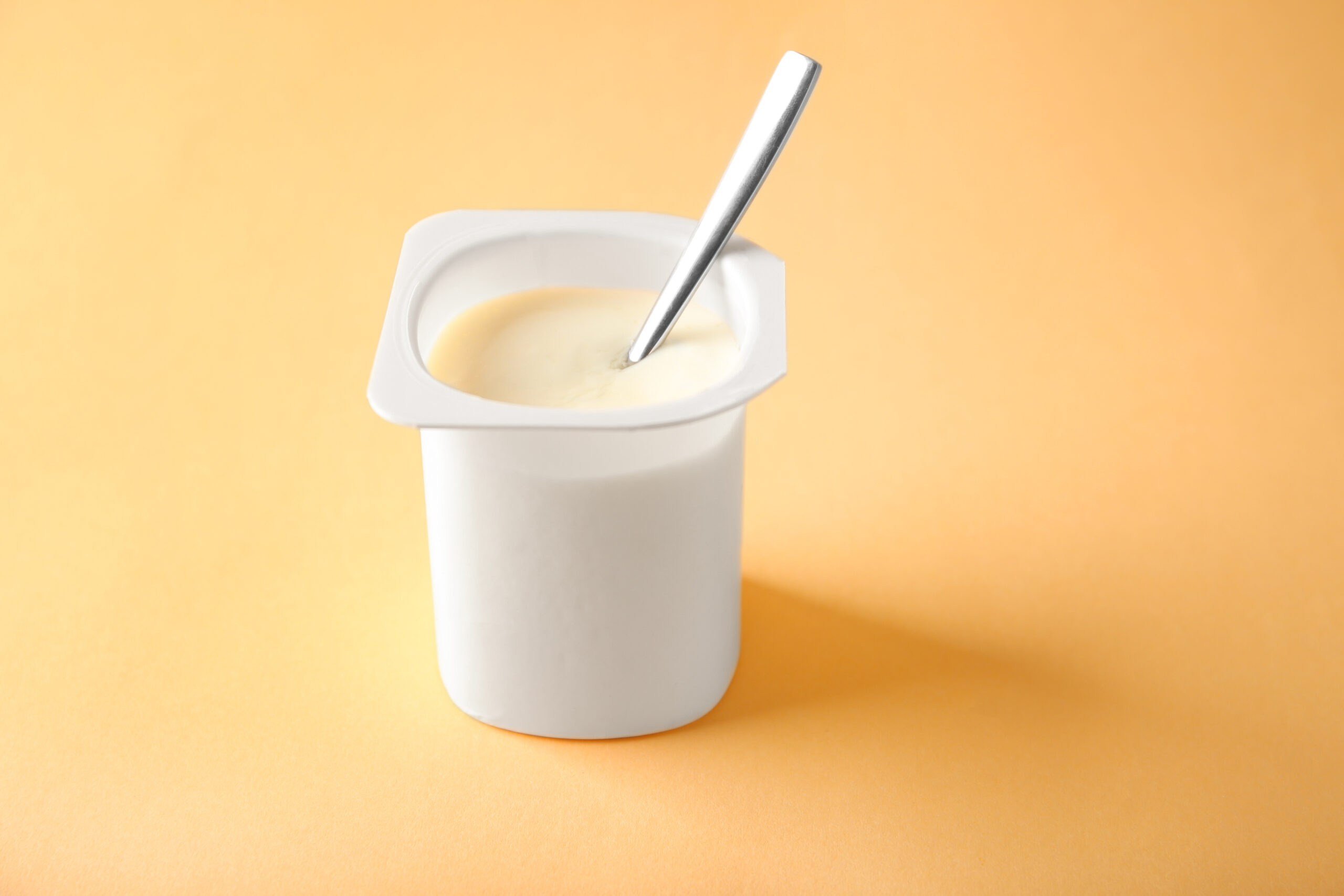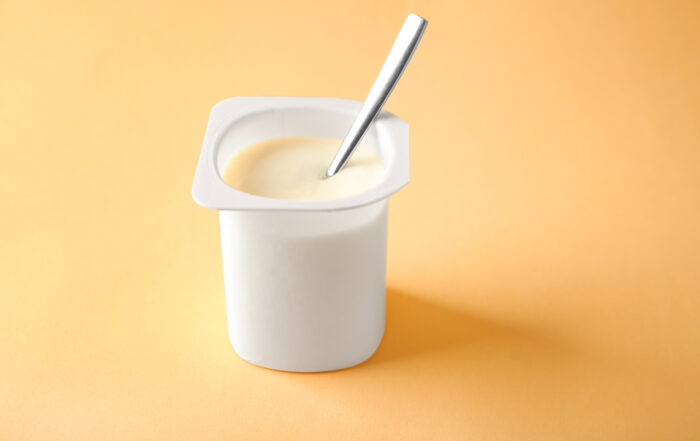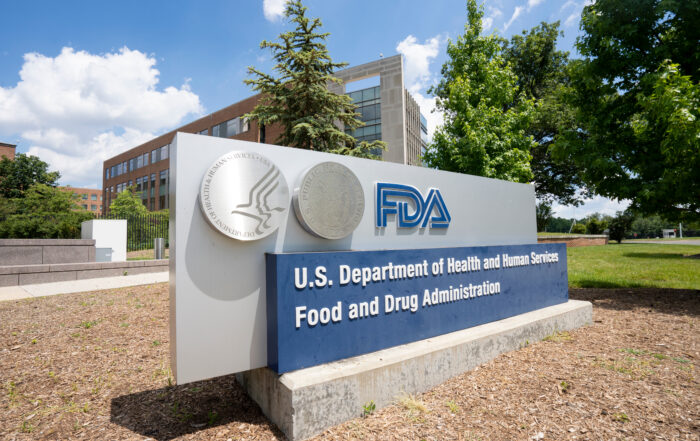
FDA Amends Final Ruling for Yogurt Standard of Identity
By Megan Maisano, G.H. Meletharayil & Dana Engel
The Food and Drug Administration (FDA) recently amended a final rule revising the standard of identify for yogurt in response to objections from the industry. The final rule, issued on June 11, 2021, was initiated partly in response to a citizen petition submitted by the National Yogurt Association (NYA) in February 2000 (86 FR 31117). NYA’s successor, the International Dairy Foods Association (IDFA), and Chobani, Inc. (Chobani) submitted objections to the final rule and requested a hearing. FDA’s response on December 15, 2022, declined the requests for a public hearing but modified several provisions based on the objections (87 FR 76559).
The amended rule concludes a decades-long process to modernize the yogurt standard and may finally drive innovation in the yogurt industry. Of particular note, the amendments expand the allowable ingredients for flavoring and sweetening, reduce optional vitamin D fortification to 10% of the daily value (DV), and provide flexibility in milkfat content. FDA also revoked the separate standards of identity for lowfat and nonfat yogurt. The rule is effective as of January 17, 2023, with a compliance date of January 1, 2024.
Background
Standards of Identity[1]: Beginning in 1939, Standards of Identity (SOIs) were established by FDA. They provide descriptions of what a food must contain, how it is prepared or formulated, and other essential characteristics to its identity. SOIs are intended to promote honesty and protect consumers by ensuring that foods are consistent with what they expect. Additionally, they help prevent economic adulteration, a type of food fraud where an ingredient is left out, removed, or substituted for profitable purposes. Currently, there are over 250 SOIs for products like milk, breads, peanut butter, and eggs that are detailed in 21 C.F.R Chapter 1 Subchapter B. SOIs can be updated to improve principles for transparent amendments, allow for continued innovation in the marketplace, and support the production and innovation of healthier food.
Amending Yogurt’s SOI[2]: The SOI for yogurt, as described in 21 C.F.R § 131.200, is characterized by traits such as ingredients, milkfat content and acidity, bacterial cultures, and pasteurization processes. The SOI amendment process for yogurt has been ongoing for over two decades. It started in February 2000 when the NYA (now known as IDFA) submitted a citizen petition to FDA to revoke the SOIs for lowfat and nonfat yogurt, and amend the SOI for yogurt to better align with advances in food technology and industry practices (Docket No. FDA-2000-P-0126). The petition asserted that establishing a single SOI for yogurt that allowed for varying levels of fat would help resolve inconsistencies between the SOI requirements and the definitions of “lowfat” and “nonfat” under nutrient content claim regulations. Furthermore, modernizing the SOI would allow industry to make technical changes in processing, expand safe and suitable ingredients, and label “live and active cultures.”
Nearly nine years later, in January 2009, FDA announced a proposed rule to amend the SOI of yogurt and revoke the SOIs for lowfat and nonfat yogurt in response to NYA’s petition (74 FR 2443). Over 10 years after this proposed rule, in June 2021, FDA issued a final rule amending the SOI for yogurt to allow flexibility for technological advances while still preserving its basic nature and essential characteristics (86 FR 31117). In addition to revoking the separate SOIs for lowfat and nonfat yogurt, notable amendments included permitting the use of reconstituted forms of dairy ingredients (cream, milk, skim milk, etc.), establishing classes of safe and suitable ingredients like bacterial cultures, flavoring, additives and sweeteners, and establishing thresholds for vitamins A and D fortification as well as “contains live and active culture” labeling.
Industry Objections and FDA’s Response[3]
In July 2021, IDFA and Chobani filed timely objections and requests for a hearing on several provisions in the final rule. In March 2022, FDA issued an administrative stay of the effectiveness of six provisions in the final rule (87 FR 16394) pending its consideration of these objections. In December 2022, FDA denied the requests for a public hearing but responded substantively to the objections and made some corresponding modifications to the final rule (87 FR 76559).
The objections to the provisions and FDA’s response are outlined below:
- Titratable acidity and pH: The final rule required that yogurt have a titratable acidity of not less than 0.7% or a pH of 4.6 or lower before the addition of bulky flavoring. IDFA objected and asserted that this is not practical and does not reflect consumer taste preference or current industry practices. In response, FDA submitted a proposed order (Docket No. FDA-2000-P-0126) to revise the amendment to eliminate the minimum titratable acidity option and specify that the pH must measure 4.6 or lower on the finished product within 24 hours after filling. If FDA finalizes this proposed order, notice will be published in the Federal Register.
- Addition of pasteurized cream before culturing: The final rule prohibits the addition of pasteurized cream after culturing. IDFA objected and contended that the milkfat in pasteurized cream is not affected by culturing, therefore adding it after will not affect the characteristics of the product. FDA denied the request to permit the addition of cream after culturing, stating that IDFA did not provide sufficient evidence that it will not affect the characteristic texture of yogurt.
- Optional vitamin D fortification threshold: The final rule required that vitamin D, if added, must be present at not less than 25% DV per reference amount customarily consumed (RACC), within limits of current good manufacturing practices. IDFA objected and requested that the minimum fortification requirement be 10% DV per RACC, which meets the “good source” content claim threshold and complies with the level that is generally recognized as safe. FDA agreed with IDFA’s objection and lowered the minimum optional fortification of vitamin D to 10% of the RACC.
- Milkfat content: The final rule required that yogurt, before the addition of bulky flavoring ingredients, contains not less than 3.25% milkfat. IDFA objected and argued that this requirement is not consistent with the characteristics of yogurt, does not reflect common industry practices, and restricts innovation for the use of flavoring ingredients. IDFA requested a minimum total fat content of 3 grams per RACC. FDA agreed to modify the rule to permit yogurt with milkfat content between the upper limit for reduced fat yogurt (2.44%) and the minimum requirement for yogurt (3.25%). If yogurt falls within this range, it must be labeled with a statement of the milkfat percentage. Additionally, to allow for product innovation, FDA allowed such products to contain fat-containing flavoring ingredients that increase the total fat content. However, such products must be labeled according to their milkfat content and have a descriptor of the flavoring ingredient (e.g., lowfat yogurt with cashews).
- Exclusion of non-nutritive sweeteners: The final rule limited the use of sweeteners to nutritive carbohydrate sweeteners. IDFA objected and asserted that the use of non-nutritive sweeteners is also consistent with the basic nature of sweetened yogurt. FDA agreed to modify the amendment to allow non-nutritive sweeteners in yogurt without the requirement of a content claim (e.g., reduced sugar, reduced calorie).
- Exclusion of ultrafiltered (UF) milk: The final rule excluded UF milk from the allowed basic dairy ingredients. Chobani objected and stated that UF milk is consistent with the essential characteristics of yogurt, is safe and nutritious, improves production efficiency, and is consistent with other dairy SOIs and international standards for yogurt. FDA denied Chobani’s request, stating they did not present sufficient evidence to show that the reduced lactose content and nutrient variability would maintain the basic nature and characteristics of yogurt.
Innovation Opportunity
The new SOI for yogurt established by FDA may drive innovation in the yogurt category by providing flexibility for product developers to create yogurt with reduced sugars and lower milk fat content. Specifically, the use of non-nutritive sweeteners, without a nutrient content claim on packaging, can help modernization efforts in the industry by allowing for the reduction of sugar levels without the need to meet nutrient content claims as previously required. Additionally, the SOI allows for a range of milk fat content in yogurts, removing naming ambiguities and allowing for the creation of lowfat yogurt products with fat-containing flavoring ingredients. This can lead to a wider range of options for health-conscious consumers seeking lower-fat and lower-sugar options in the yogurt category.
UF milk is becoming a popular ingredient in recent yogurt-type product launches due to its ability to offer differentiated textures, tastes, and nutritional profiles. However, FDA denied Chobani’s objection to allowing UF milk as a basic dairy ingredient under the new yogurt SOI rules. Despite this denial, processors may still innovate with UF milk by obtaining a Temporary Marketing Permit (TMP) from FDA. FDA allows TMPs to help manufacturers test products that deviate from their established SOI in order to collect data that can support amendments to food standards for healthy food innovation.[4] As UF milks can yield yogurt products with low/zero sugar and higher protein levels, such innovation may cater to growing consumer demand for these properties.
The amended SOI allows for the use of optional dairy ingredients to increase milk solids above the minimum 8.25%, which opens opportunities for using novel ingredients such as functional milk protein concentrates and whey proteins to create tailored products with unique sensory and textural qualities. Pending the proposed order from FDA (Docket No. FDA-2000-P-0126), yogurt will require a pH of 4.6 or lower within 24 hours of filling. Removing the acidity requirements will help innovation in the low-calorie yogurt category (as added sugar is used to counteract higher acidity). However, removing the acidity requirements for yogurts may prove to be challenging when designing higher protein yogurt products where buffering of the proteins may resist the change in pH to 4.6 and below. Overall, the new SOI rules for yogurt provide avenues for product innovation and new options for consumers.
Public Health Implications
Dairy foods, like lowfat and nonfat yogurt, provide important essential nutrients that contribute to multiple healthy dietary patterns, including those recommended by the Dietary Guidelines for Americans. Yogurt specifically offers high-quality protein, calcium, phosphorus, riboflavin, pantothenic acid, vitamin B12, zinc, selenium, and iodine. Additionally, as a part of a healthy dietary pattern, yogurt is linked to improved bone health, weight management, reduced markers of inflammation, and decreased risk for chronic diseases.[5] As a fermented dairy food, many yogurts also offer probiotics that have unique health benefits, including improved digestive health.[6]
Research shows that 90% of Americans don’t eat the recommended servings of dairy foods.[7] Specifically, adults only consume 0.07 servings of yogurt per day.[8] Therefore, modernizing food standards to increase industry flexibility and advance healthy innovation in the yogurt marketplace can potentially have considerable public health impact.
Conclusion
After over 20 years of proposed and modified amendments, FDA’s SOI for yogurt reached a final rule effective January 17, 2023, with a compliance date of January 1, 2024. In summary, FDA revoked the separate SOIs for lowfat and nonfat yogurt and modified several provisions concerning its milkfat content, pH level (pending proposed order), vitamin D fortification criteria, and allowance of fat-containing flavors as well as safe and suitable sweeteners.
These amendments enable greater flexibility and technological developments in yogurt production and provide opportunity for healthy innovation while preserving the basic nature and nutritional integrity of the yogurt we know.
[1] U.S. Food & Drug Admin., Standards of Identify for Food, https://www.fda.gov/food/food-labeling-nutrition/standards-identity-food (content current as of Dec. 14, 2022).
[2] U.S. Food & Drug Admin., FDA Amends Standard of Identity for Yogurt, https://www.fda.gov/food/cfsan-constituent-updates/fda-amends-standard-identity-yogurt (content current as of Dec. 14, 2022).
[3] Id.; U.S. Food & Drug Admin., FDA Amends Standard of Identity for Yogurt, https://www.fda.gov/food/cfsan-constituent-updates/fda-amends-standard-identity-yogurt (content current as of Dec. 14, 2022); International Dairy Foods Assoc., RE: Milk and Cream Products and Yogurt Products; Final Rule to Revoke the Standards for Lowfat Yogurt and Nonfat Yogurt and to Amend the Standard for Yogurt [Docket No. FDA-2000-P-0126], https://www.idfa.org/wordpress/wp-content/uploads/2021/07/IDFA-Yogurt-SOI-Objection_7.12.21.pdf (July 2021); U.S. Food & Drug Admin., Comment from Chobani, LLC, https://www.regulations.gov/comment/FDA-2000-P-0126-0108 (July 12, 2021); U.S. Food & Drug Admin., Proposed Order re: International Dairy Foods Association and Chobani, Inc.: Response to the Objections and Requests for a Public Hearing on the Final Rule To Revoke the Standards for Lowfat Yogurt and Nonfat Yogurt and To Amend the Standard for Yogurt, https://www.regulations.gov/document/FDA-2000-P-0126-0129 (Dec. 2022); Code of Federal Regulations, 21 C.F.R. § 131.200 (Yogurt), https://www.ecfr.gov/current/title-21/chapter-I/subchapter-B/part-131/subpart-B/section-131.200 (Dec. 2022).
[4] U.S. Food & Drug Admin., FDA Issues Guidance on Temporary Marketing Permits, https://www.fda.gov/food/cfsan-constituent-updates/fda-issues-guidance-temporary-marketing-permits (content current as of Nov. 2021).
[5] National Dairy Council, State of the Science Dairy Foods and Health, https://www.usdairy.com/getmedia/74c1d98a-cf00-4f26-8c86-0098c6b2e3c1/NDC-Science-Summary-Book-FINAL-8-2022.pdf?ext=.pdf (Aug. 2022).
[6] Dennis A. Savaiano & Robert W. Hutkins, Yogurt, Cultured Fermented Milk, and Health: A Systematic Review, 79 Nutrition Revs. 599 (2020).
[7] U.S. Dep’t of Agric. & U.S. Dep’t of Health & Hum. Servs., Dietary Guidelines for Americans, 2020–2025, 9th Edition, https://www.dietaryguidelines.gov/sites/default/files/2020-12/Dietary_Guidelines_for_Americans_2020-2025.pdf (Dec. 2020).
[8] Christopher J. Cifelli, Kristin Fulgoni, Victor L. Fulgoni III & Julie M. Hess, Disparity in Dairy Servings Intake by Ethnicity and Age in NHANES 2015–2018, 7 Current Devs. Nutrition 100010 (Feb. 2023).
Update Magazine
Spring 2023

 MEGAN MAISANO is the Director of Nutrition and Regulatory Affairs at National Dairy Council. Maisano provides regulatory and scientific guidance to support dairy-related communications, outreach, and education.
MEGAN MAISANO is the Director of Nutrition and Regulatory Affairs at National Dairy Council. Maisano provides regulatory and scientific guidance to support dairy-related communications, outreach, and education. G. H. MELETHARAYIL is the Vice President of Product Research at National Dairy Council. Meletharayil manages food research programs and innovation labs at the National Dairy Foods Research Centers.
G. H. MELETHARAYIL is the Vice President of Product Research at National Dairy Council. Meletharayil manages food research programs and innovation labs at the National Dairy Foods Research Centers. DANA ENGEL is the Vice President of Regulatory and Scientific Affairs at National Dairy Council. Engel provides technical guidance and science translation across the organization and integrates current nutrition science on dairy’s role in healthy dietary patterns and sustainable food systems into dairy programs.
DANA ENGEL is the Vice President of Regulatory and Scientific Affairs at National Dairy Council. Engel provides technical guidance and science translation across the organization and integrates current nutrition science on dairy’s role in healthy dietary patterns and sustainable food systems into dairy programs.





